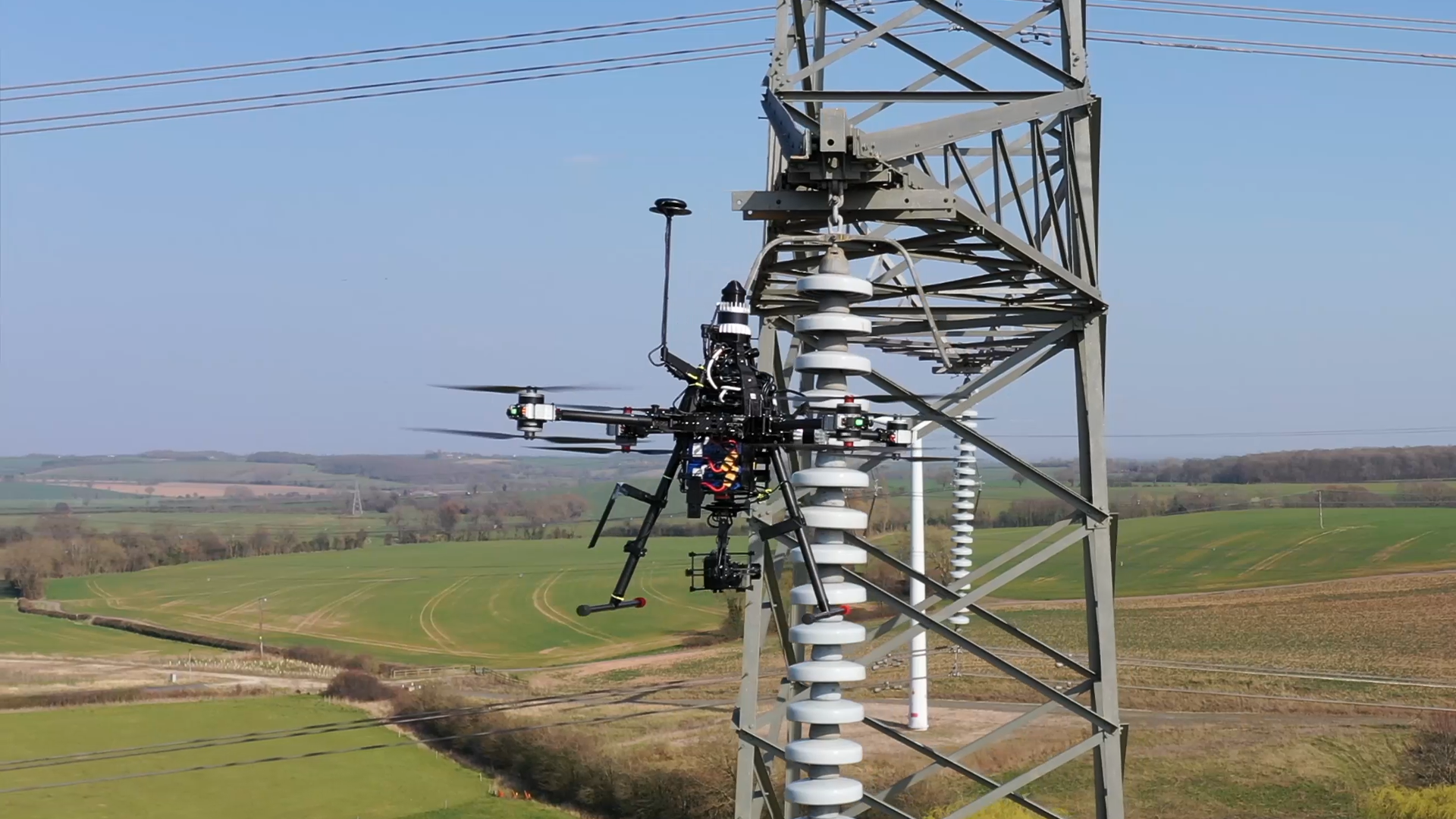
National Grid play key role in new drone infrastructure inspection policy
The way drones inspect infrastructure is set to change following pioneering work by our Overhead Line condition monitoring team.
The new rules introduced by the UK Civil Aviation Authority gives us the potential to transform the way we inspect the electricity transmission network.
Three years ago, we were one of the first to gain permission to fly our drones, which use hi-resolution digital cameras to check overhead lines and substations for any faults, ‘beyond visual line of sight’. Pioneered by Mark Simmons, then OHL Condition Monitoring Manager, it was a ground-breaking step and meant we could inspect towers and conductor spans much more efficiently than previously and critically, it means ensuring our highly skilled lineworkers are ‘climbing to do, not view’ helping to keep them safe.
The Civil Aviation Authority (CAA) are now allowing long distance inspection of infrastructure such as power lines, wind turbines as well as site security. Importantly, their proposed new policy puts us as owners of Critical National Infrastructure in control of who can fly in proximity to our assets. In future, we could even move to operating our drones from a central control room operation to inspect some of our assets, rather than having to travel to the geographic area where inspections are being carried out.
Read more about our drone innovation work here
The regulator’s new rules will allow drones to remain at low heights and close to buildings or infrastructure, where there is little or no potential for any other aircraft to be operating which is an important piece of the safety jigsaw to protect not only our assets but also our helicopter inspection crews.
The regulator will initially work with several operators to test and evaluate the policy in a safe and scalable way, demonstrating the regulator’s commitment to safely enabling innovative technologies.
Kathryn Fairhurst, Overhead Line Operations Director said:
“Deploying this groundbreaking initiative at scale, and ensuring it complements our existing tools and processes, will help us meet the enormous challenge of rewiring the network by enabling our skilled lineworkers to focus on their specialist skills rather than collection of data. It is an absolute testament to Mark Simmons and his vision for how this innovation could change our sector – it just shows that creativity, passion to innovate and ongoing tenacity can deliver massive positive change.”
Our work has been developed with sees.ai, whose CEO John McKenna said:
“This new policy paves the way for sees.ai and NGET to conduct nationwide aerial inspection, survey, and rapid response work from a central control room.”


